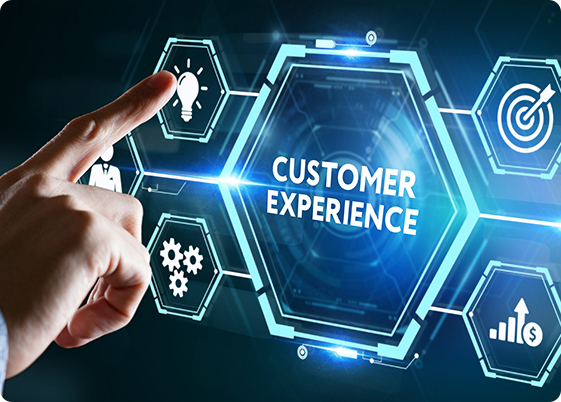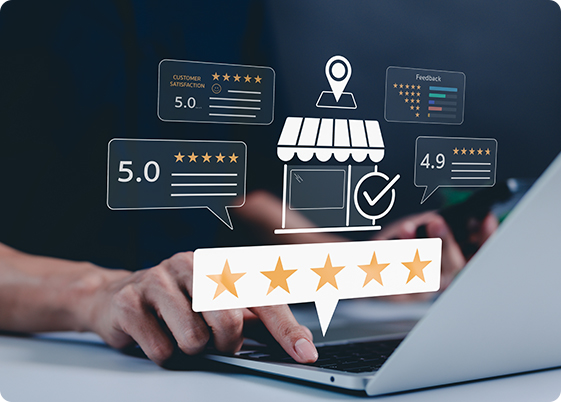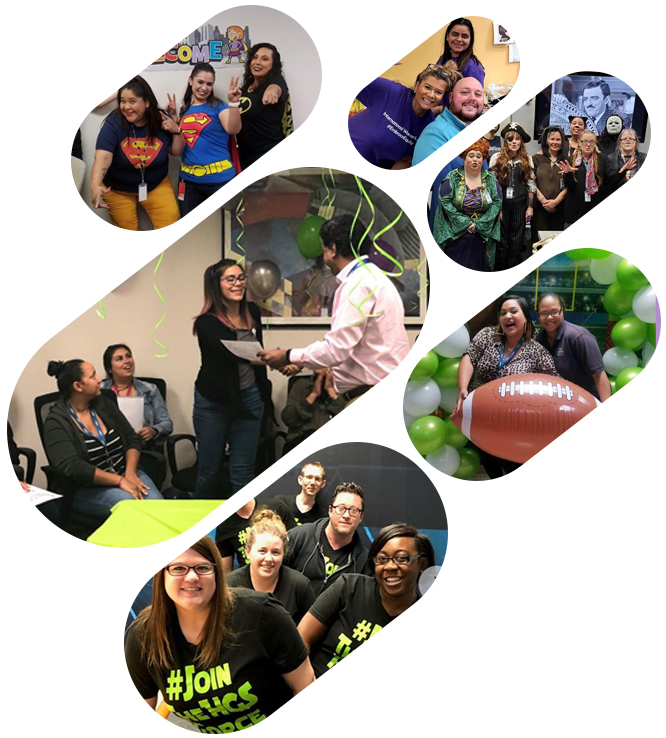In today's customer-oriented world, understanding the difference between customer service and customer experience is crucial. Although closely related, they are vital in creating an image of how customers perceive your brand.
Regardless of your profession, whether you are a marketing expert, an entrepreneur, or a part of the customer service team in the USA, understanding the depth of these concepts is vital for creating long-term customer loyalty and brand value.
This blog will help you understand customer service, customer experience, key components, and differences.

What is CX or Customer Experience?
The customer experience (CX) means the overall impression formed on the customer about a brand based on all the interactive experiences throughout the customer journey, from knowing about the brand to contacting for support, getting the product delivered, or connecting and interacting on social media.
While customer service focuses on specific interactions, customer experience encompasses the entire relationship a customer has with a brand.
If you are wondering, "What is CX?" Try to understand it as an emotional connection that customers develop with a brand during every interaction.
Key Components of Customer Experience
Customer experience relies on several key factors, which are mentioned below:
- Consistency Across Channels: Customers expect an immersive experience throughout their journey, whether they connect online, in a store, or over the phone.
- Easy to Navigate: Any point of interaction on websites, apps, and customer processes should be interactive and user-friendly.
- Emotional Connection: A positive emotional connection creates a significant impact. Feeling valued, respected, and understood is crucial to enhancing great CX.
- Personalization: Personalized communications and services based on customer data enhance satisfaction and customer retention.
- Proactive Engagement: Being proactive with customer needs before they ask builds trust and loyalty for the brand.
As the digital world has grown significantly, the need for technology in CX has risen exponentially. To understand in more detail, explore what is Digital Customer Experience and discover how digital tools are recreating modern customer interactions.

What is Customer Service?
Customer service focuses on selected interactions, mainly when a customer needs support, advice, or help. Compared to the customer experience, which is broad and continuous, customer service is a specific interaction with the brand.
If you are wondering what is customer service, it is the help, assistance, and support provided to customers before, during, or after a purchase. This interaction generally involves problem-solving, answering inquiries, and ensuring customer satisfaction during direct interactions.
Customer service is a specific department (like call centers and help desks), whereas customer experience is a company-wide focus.
Key Components of Customer Service
There are several key components of customer service. To provide an excellent service, the following factors are:
- Timely Response: A timely response and quick assistance are appreciated when customers encounter issues.
- Knowledgeable Agents: The customer service agents should have in-depth knowledge of the product and be able to provide prompt service.
- Empathy and Patience: The agents should be able to handle frustrated customers with patience, which is very crucial.
- Problem Resolution: Providing prompt resolution with minimum steps builds trust.
- Feedback Collection: Taking feedback is a quality of excellent service teams and a good customer experience.
Strong customer service components are essential for success across all support channels—phone, chat, or email.
If you want to build a career in this field, check out the latest customer service jobs to get started.

Key Differences Between Customer Experience and Customer Service
Understanding customer experience vs customer service is essential to improve both. Here’s how they differ:
Continuation vs. Single Touchpoint
- Customer Experience: It focuses on the entire customer journey over time, across various checkpoints.
- Customer Service: This mainly focuses on single or specific interactions, such as assisting, answering a question, or resolving a complaint.
While comparing customer care vs customer experience, the most important thing to remember is that customer care is a form of customer service that focuses on showing concern, empathy, and assistance during interactions. However, it is still only part of the bigger CX scenario.
Proactive vs. Reactive
- Customer Experience: Proactively builds relationships and brand image through design, understanding needs, and creating memorable experiences.
- Customer Service: Typically reactive, addressing customers’ urgent needs or issues.
The best companies practice proactive strategies to improve CX while improving and strengthening their reactive customer service methodology.

Satisfaction Metrics vs. Service Metrics
- Customer Experience Metrics: Measure overall satisfaction, brand loyalty, and emotional bond. Examples of these metrics include Net Promoter Score (NPS) and Customer Satisfaction Score (CSAT).
- Customer Service Metrics: Measure the overall performance of customer assistance, such as First Call Resolution (FCR), Average Handle Time (AHT), and Customer Effort Score (CES).
If you want to know what is the difference between customer service and customer experience in measurable terms, these metrics will give you a detailed idea of this topic.
Long-Term vs. Short-Term
- Customer Experience: It focuses on creating a long-term relationship where every interaction adds a long-lasting impression.
- Customer Service: Focuses on dealing with immediate assistance or problems, impacting short-term satisfaction.
A successful company prioritizes CX and views every small service interaction as a way of building a larger image for the Brand.

Why This Difference Matters
Knowing the difference between customer service and customer experience has practical implications. It is crucial for a business’s success and image. Companies that focus only on customer service without investing much in broader CX initiatives may often miss opportunities to create long-lasting customer loyalty and retention opportunities.
By combining excellent service interactions with a strong focus on the customer journey, brands can stand out in the market, increase retention rates, and improve customer value.
Conclusion
In short, customer experience vs customer support or assistance is about scale and scope. Customer service handles customers with urgency during individual interactions, while customer experience covers the overall journey and shapes emotional bonds with the brand.
To succeed in India’s competitive market, businesses must excel in both services. To improve customer experience (CX), a corporation will require a country-wide strategy, and to improve customer service, it will require a professional team of customer service representatives who deliver exceptional customer service at each interaction.
From reconditioning these service strategies to redesigning the brand's entire customer journey, understanding these factors gives you a strategic advantage over others.
Are you looking to improve your skills in this field? Learn more practical Customer Service Job Tips to work better in customer-facing job profiles, especially in companies like HGS.
Frequently Asked Questions (FAQs)
How does customer experience impact customer loyalty?
A great customer experience builds trust, satisfaction, and emotional attachment, driving customers to return, recommend others, and remain loyal in the long run.
How can businesses improve customer experience?
Companies can enhance CX by personalizing interactions, streamlining processes, preemptively handling customer needs, and developing employees.
Is customer service a part of the customer experience?
Customer service is part of the larger customer experience (CX). Each service interaction contributes to building customers' overall impression of a brand.
How does technology impact customer experience and service?
Technology facilitates quicker responses, personalized communication, automated assistance, and seamless experiences on multiple channels, accelerating customer service and customer experience initiatives.
 US
US Canada
Canada Colombia
Colombia India
India Jamaica
Jamaica Philippines
Philippines UK
UK SA
SA
